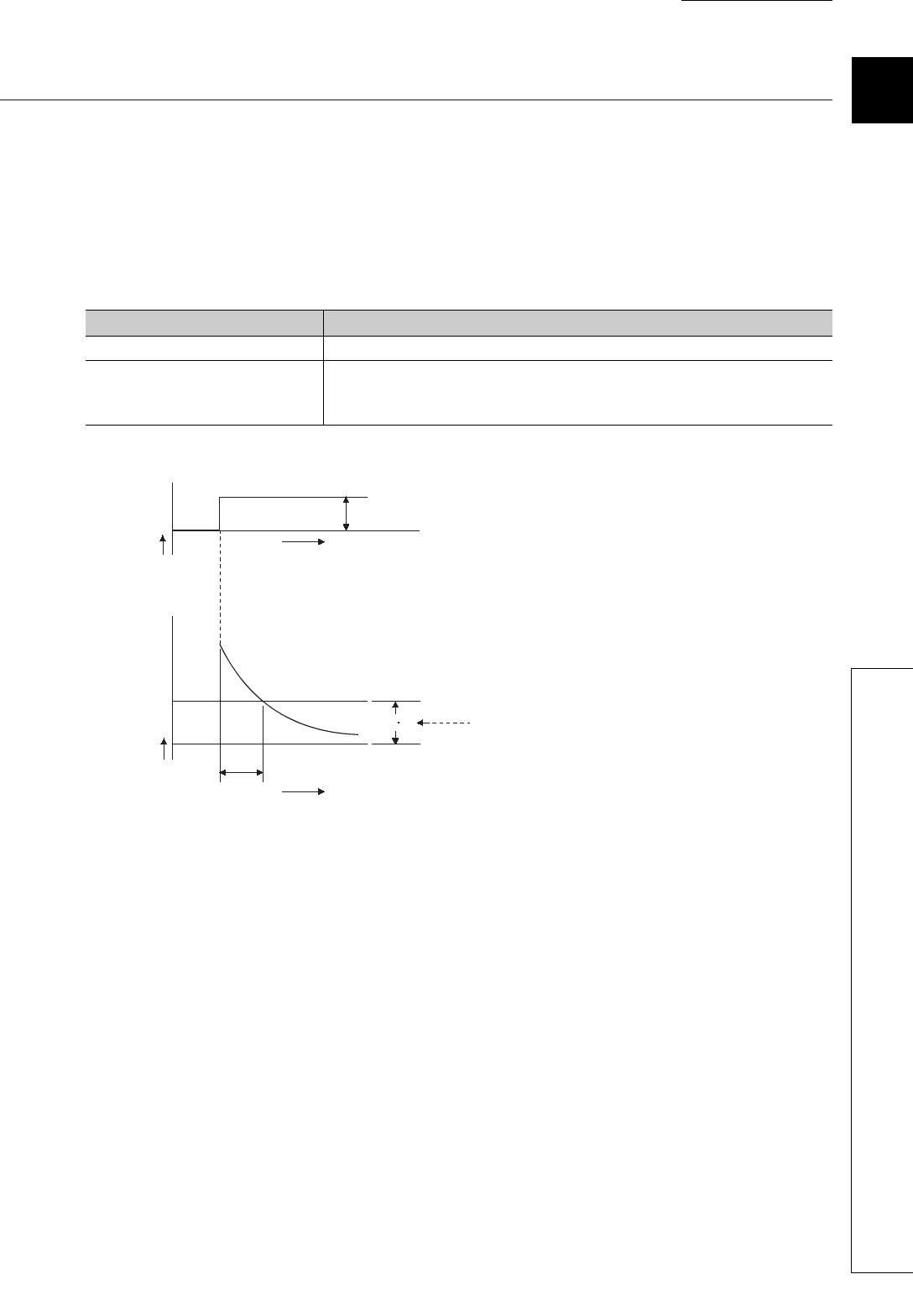
27
CHAPTER 1 OVERVIEW
1
1.3 About the PID Operation
1.3.5 Derivative action (D-action)
1.3.5 Derivative action (D-action)
A derivative action adds the manipulated value (MV) proportional to the rate of change to eliminate the deviation (E)
when it occurs.
A derivative action can prevent the control target from changing significantly due to disturbance.
In a derivative action, the time from a deviation occurrence until when the manipulated value (MV) of the derivative
action becomes equals to that of the proportional action is called derivative time, and is indicated as TD.
The following table describes the difference of actions depending on the value of T
D, derivative time.
The following figure shows a derivative action of step responses where the deviation (E) is a fixed value.
A derivative action is used as a PD action in combination with a proportional action, or PID action in combination with
a proportional and integral actions.
A derivative action cannot be used by itself.
Condition Derivative action
TD is a small value The derivative effect gets small.
T
D is a large value
The derivative effect gets large.
Though, the temperature process value (PV) tends to fluctuate around the set value
in short cycles.
E
Manipulated value of the Proportional action
T
D
Time
Time
Deviation
(E)
Manipulated
value (MV)
K
P E


















